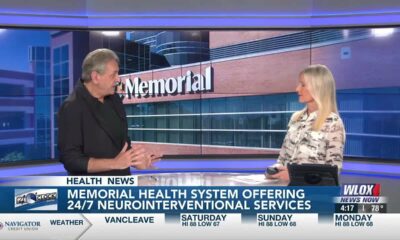Kaiser Health News
A Rural County’s Choice: Use Opioid Funds to Pay Off Debt, or Pay Them Forward to Curb Crisis
by Aneri Pattani
Tue, 16 May 2023 09:00:00 +0000
Over the past two years, rural Greene County in northeastern Tennessee has collected more than $2.7 million from regional and national settlements with opioid manufacturers and distributors. But instead of helping people harmed by addiction, county officials are finding other ways to spend it.
They have put $2.4 million toward paying off the county's debt and have directed another $1 million arriving over more than a decade into a capital projects fund. In March, they appropriated $50,000 from that fund to buy a “litter crew vehicle” — a pickup truck to drive inmates to collect trash along county roads.
“It's astounding,” said Nancy Schneck, a retired nurse who has seen addiction infiltrate the community, where employers avoid drug testing for fear of losing too many employees and mental health crises and homelessness are rampant. She wants to see the money go toward mental health and addiction treatment. Why can't county leaders “see treating some people and maybe getting them out of this cycle might be advantageous?” she said.
In 2021, the latest year for which comparable data is available, Greene County's rate of drug overdose deaths topped state and national figures.
But Mayor Kevin Morrison said the county has borne the costs of the opioid epidemic for years: It has funded a beleaguered sheriff's office, improved the jail — which is packed with people who've committed addiction-related crimes — and supported a drug court to divert some people to treatment. It has also suffered indirect costs of the crisis: people dropping out of the workforce due to addiction, schools and welfare services caring for more children who've experienced trauma, and some taxpayers leaving the county altogether. Addiction is not the sole reason for Greene County's economic woes, but it has contributed to more than $30 million of debt.
“We've been dealing with this crisis for quite some time, but nobody wants to pay the bill as it comes,” Morrison said. “So when these funds are made available, then we are paying bills that have been due for quite some time.”
The debate in this Appalachian county is reverberating nationwide as state and local governments receive billions of dollars from companies that made, distributed, or sold opioid painkillers, like Johnson & Johnson, Cardinal Health, and CVS. The companies were accused of fueling the overdose epidemic, and the money is meant to remediate that harm. About $3 billion has already landed in state, county, and city coffers, and about $50 billion more is expected in the coming decade and beyond.
States are required to spend at least 85% of the money on opioid-related programs, but KFF Health News' ongoing investigation into how the cash is used — and misused — shows there is wide interpretation of that standard and little oversight.
That restriction didn't apply to the money Greene County moved to its capital projects fund.
In many rural communities, which have been struggling to pay addiction-related costs for decades, local officials justify using the settlement funds to reimburse past expenses. Most of Tennessee's 95 counties are in significant debt, which can present difficult choices about how to use this money, said Robert Pack, co-director of East Tennessee State University's Addiction Science Center.
Still, he and many advocates hope the settlement funds are spent on tackling the current crisis. After all, more than 200 people nationwide are dying of overdoses each day. Investing in treatment and prevention can save lives and protect future generations, they say.
“There is no good excuse to sit on the funds or put them into a general fund,” said Tricia Christensen, policy director for the nonprofit Community Education Group. The organization is tracking settlement spending across Appalachia, which Christensen called the epidemic's ground zero. “These dollars should be used to support people who have been most impacted by the overdose crisis.”
Nationally, there has been little oversight of the settlement dollars. President Joe Biden's administration pledged to ensure the funds went toward tackling the addiction crisis, but has taken little action. Accountability at the state level varies.
In Tennessee, 15% of the state's opioid settlement funds are controlled by the legislature and another 15% by local governments. Those two buckets have few restrictions.
The other 70% is controlled by an Opioid Abatement Council, which has more rigorous standards. When the council, which must give 35% of its funds to local governments, recently distributed more than $31 million to counties, it required the funds be spent on a list of approved interventions, such as building recovery housing and increasing addiction treatment for uninsured people.
“I can guarantee we're going to bird-dog” those funds, said Stephen Loyd, chair of the council and a physician in recovery from opioid addiction. If counties use them for unapproved purposes, the counties will not receive future payouts, he said.
Greene County's reimbursement of its capital projects fund comes from its own pot — the 15% that is controlled entirely by local governments.
In such cases, the public can hold officials accountable, Loyd said. “If you don't like the way the money is being spent, you have the ability to vote.”
Local leaders are generally not being “nefarious” with these decisions, he said. They make hundreds of budgetary choices a month and simply don't have experience with addiction or health policy to guide them in using the money.
Loyd and other local experts are trying to fill that gap. He meets with county officials and recommends they speak with their local anti-drug coalitions or hold listening sessions to hear from community members. Pack, from East Tennessee State, urges them to increase access to medications that have proven effective in treating opioid addiction.
Both men point counties to an online recovery ecosystem index, where leaders can see how their area's resources for recovery compare with those of others.
In Greene County, for example, the index indicates there are no recovery residences and the number of treatment facilities and mental health providers per 100,000 residents is below state and national averages.
“That's a great place to get started,” Loyd said.
Some Greene County residents want to see opioid settlement funds go to local initiatives that are already operating on the ground. The Greene County Anti-Drug Coalition, for instance, hosts presentations to educate young people and their parents on the risks of drug use. They meet with convenience store owners to reinforce the importance of not selling alcohol, cigarettes, or vaping devices to minors. In the future, the coalition hopes to offer classes on life skills, such as how to budget and make decisions under pressure.
“If we can do prevention work with kids, we can change the trajectory of their lives as adults,” said Wendy Peay, secretary of the anti-drug coalition and executive director of United Way of Greene County.
The coalition has asked the county for settlement funds but has not received any yet.
Nearby in Carter County, a new residential treatment facility is taking shape at the site of a former prison. At least seven counties, cities, and towns in the region have committed a combined $10 million in opioid settlement funds to support it, said Stacy Street, a criminal court judge who came up with the idea. Greene County is among the few local governments that did not contribute.
It will be part of the region's drug recovery court system, in which people with addiction who have committed crimes are diverted to intensive treatment instead of prison.
Currently there are no long-term residential facilities in the area for such patients, Street said. Too often, people in his court receive treatment during the day but return home at night to “the same sandbox, playing with the same sand-mates,” increasing their risk of relapse.
Street said the new facility will not offer medications to treat opioid addiction — the gold standard of medical care — because of security concerns. But some patients may be taken to receive them off campus.
Morrison, the Greene County mayor, said he worried about contributing to the facility because it is a recurring cost and the settlement funds will stop flowing in 2038.
“There's been great pressure put on local entities like Greene County to try to solve this problem with this limited amount of funding,” he said, when “the federal government, which has the ability to print money to solve these problems, is not in this business.”
The county is still deciding how to spend nearly $334,000 of settlement funds it recently received from the state's Opioid Abatement Council. Morrison said they're considering using it for the anti-drug coalition's education efforts and the county drug court. Given the guidelines from the abatement council, these funds can't be used to pay old debts.
By: Aneri Pattani
Title: A Rural County's Choice: Use Opioid Funds to Pay Off Debt, or Pay Them Forward to Curb Crisis
Sourced From: kffhealthnews.org/news/article/rural-greene-county-opioid-settlement-funds-debt-treatment/
Published Date: Tue, 16 May 2023 09:00:00 +0000
Did you miss our previous article…
https://www.biloxinewsevents.com/as-more-hospitals-create-police-forces-critics-warn-of-pitfalls/
Kaiser Health News
Journalists Delve Into Climate Change, Medicaid ‘Unwinding,’ and the Gap in Mortality Rates
Sat, 04 May 2024 09:00:00 +0000
KFF Health News senior correspondent Samantha Young discussed Medicaid and climate change on KCBS Radio's “On-Demand” podcast on April 29.
- Click here to hear Young on KCBS
- Read Young's “AC, Power Banks, Mini Fridges: Oregon Equips Medicaid Patients for Climate Change“
KFF Health News contributor Andy Miller discussed Medicaid unwinding on WUGA's “The Georgia Health Report” on April 26.
- Click here to hear Miller on “The Georgia Health Report”
- Read Phil Galewitz' “Millions Were Booted From Medicaid. The Insurers That Run It Gained Medicaid Revenue Anyway.“
KFF Health News Nevada correspondent Jazmin Orozco Rodriguez discussed mortality rates in rural America on The Daily Yonder's “The Yonder Report” on April 24.
- Click here to hear Rodriguez on “The Yonder Report”
- Read Rodriguez' “City-Country Mortality Gap Widens Amid Persistent Holes in Rural Health Care Access”
——————————
Title: Journalists Delve Into Climate Change, Medicaid ‘Unwinding,' and the Gap in Mortality Rates
Sourced From: kffhealthnews.org/news/article/journalists-delve-into-climate-change-medicaid-unwinding-and-the-gap-in-mortality-rates/
Published Date: Sat, 04 May 2024 09:00:00 +0000
Did you miss our previous article…
https://www.biloxinewsevents.com/oh-dear-baby-gear-why-are-the-manuals-so-unclear/
Kaiser Health News
Oh, Dear! Baby Gear! Why Are the Manuals So Unclear?
Darius Tahir
Fri, 03 May 2024 09:00:00 +0000
Since becoming a father a few months ago, I've been nursing a grudge against something tiny, seemingly inconsequential, and often discarded: instructional manuals. Parenthood requires a lot of gadgetry to maintain a kid's health and welfare. Those gadgets require puzzling over booklets, decoding inscrutable pictographs, and wondering whether warnings can be safely ignored or are actually disclosing a hazard.
To give an example, my daughter, typically a cooing little marsupial, quickly discovered babyhood's superpower: Infants emerge from the womb with talon-strength fingernails. She wasn't afraid to use them, against either her parents or herself. So we purchased a pistachio-green, hand-held mani-pedi device.
That was the easy part. The difficulty came when we consulted the manual, a palm-sized, two-page document.
The wandlike tool is topped with a whirring disc. One can apparently adjust the speed of its rotation using a sliding toggle on the wand. But the product manual offered confusing advice: “Please do not use round center position grinding,” it said. Instead, “Please use the outer circle position to grinding.” It also proclaimed, “Stay away from children.” In finer print, the manual revealed the potential combination of kids and the device's smaller parts was the reason for concern.
One would hope for more clarity about a doodad that could inadvertently cause pain.
Later, I noticed another warning: “If you do not use this product for a long time, please remove the battery.” Was it dangerous? Or simply an unclear and unhelpful yet innocuous heads-up? We didn't know what to do with this information.
We now notice shoddy instructions everywhere.
One baby carrier insert told us to use the product for infants with “adequate” head, neck, and torso control — a vague phrase. (The manufacturer declined to comment.)
Another manual, this one online and for a car seat — a device that's supposed to protect your kid — informed readers with words and images that a model baby was “properly positioned” relative to the top of the headrest “structure” when more than one inch from the top. Just pixels away, the same model, slumped further down, was deemed improperly positioned: “The headrest should not be more than 1” from the top of her head,” it said, in tension with its earlier instructions. Which was it, more than one inch or not? So we fiddle and hope for the best.
I acknowledge this sounds like new-parent paranoia. But we're not entirely crazy: Manuals are important, and ones for baby products “are notoriously difficult to write,” Paul Ballard, the managing director of 3di Information Solutions, a technical writing firm, told me.
Deborah Girasek, a professor of social and behavior sciences at the Uniformed Services University of the Health Sciences, told me that for decades, for the young and middle-aged alike, unintentional injury has been the leading cause of death. That's drownings, fires, suffocation, car crashes. The USU is a federal service academy training medical students destined for the armed services or other parts of the government.
Some of these deaths are caused by lack of effective communication — that is, the failure of instruction about how to avoid injury.
And these problems stretch from cheap devices to the most sophisticated products of research and development.
It's a shortcoming that's prompted several regulatory agencies charged with keeping Americans healthy, including the Consumer Product Safety Commission, the Food and Drug Administration, and the National Highway Traffic Safety Administration, to prod companies into providing more helpful instructions.
By some lights, they've had success. NHTSA, for example, has employees who actually read manuals. The agency says about three-quarters of car seats' manuals rate four or five stars out of five, up from 38% in 2008. Then again, our car seat's has a five-star rating. But it turns out the agency doesn't evaluate online material.
Medical product manuals sometimes don't fare too well either. Raj Ratwani, director of MedStar Health's Human Factors program, told me that, for a class he teaches to nurses and doctors, he prompted students to evaluate the instructions for covid-19 tests. The results were poor. One time, instructions detailed two swabs. The kit had only one.
Technical writers I spoke with identified this kind of mistake as a symptom of cost cutting. Maybe a company creates one manual meant to cover a range of products. Maybe it puts together the manual at the last moment. Maybe it farms out the task to marketers, who don't necessarily think about how manuals need to evolve as the products do.
For some of these cost-cutting tactics, “the motivation for doing it can be cynical,” Ballard said.
Who knows.
Some corners of the technical writing world are gloomy. People worry their jobs aren't secure, that they're going to be replaced by someone overseas or artificial intelligence. Indeed, multiple people I spoke with said they'd heard about generative AI experiments in this area.
Even before AI has had its effect, the job market has weighed in. According to the federal government, the number of technical writers fell by a third from 2001, its recent peak, to 2023.
One solution for people like us — frustrated by inscrutable instructions — is to turn to another uncharted world: social media. YouTube, for instance, has helped us figure out a lot of the baby gadgets we have acquired. But those videos also are part of a wild West, where creators offer helpful tips on baby products then refer us to their other productions (read: ads) touting things like weight loss services. Everyone's got to make a living, of course; but I'd rather they not make a buck off viewers' postpartum anxiety.
It reminds me of an old insight that became a digital-age cliché: Information wants to be free. Everyone forgets the second half: Information also wants to be expensive. It's cheap to share information once produced, but producing that information is costly — and a process that can't easily or cheaply be replaced. Someone must pay. Instruction manuals are just another example.
——————————
By: Darius Tahir
Title: Oh, Dear! Baby Gear! Why Are the Manuals So Unclear?
Sourced From: kffhealthnews.org/news/article/baby-product-instruction-manuals-confusing-technical-writing/
Published Date: Fri, 03 May 2024 09:00:00 +0000
Kaiser Health News
California Floats Extending Health Insurance Subsidies to All Adult Immigrants
Jasmine Aguilera, El Tímpano
Fri, 03 May 2024 09:00:00 +0000
Marisol Pantoja Toribio found a lump in her breast in early January. Uninsured and living in California without legal status and without her family, the usually happy-go-lucky 43-year-old quickly realized how limited her options were.
“I said, ‘What am I going to do?'” she said in Spanish, quickly getting emotional. She immediately worried she might have cancer. “I went back and forth — I have [cancer], I don't have it, I have it, I don't have it.” And if she was sick, she added, she wouldn't be able to work or pay her rent. Without health insurance, Pantoja Toribio couldn't afford to find out if she had a serious condition.
Beginning this year, Medi-Cal, California's Medicaid program, expanded to include immigrants lacking legal residency, timing that could have worked out perfectly for Pantoja Toribio, who has lived in the Bay Area city of Brentwood for three years. But her application for Medi-Cal was quickly rejected: As a farmworker earning $16 an hour, her annual income of roughly $24,000 was too high to qualify for the program.
California is the first state to expand Medicaid to all qualifying adults regardless of immigration status, a move celebrated by health advocates and political leaders across the state. But many immigrants without permanent legal status, especially those who live in parts of California where the cost of living is highest, earn slightly too much money to qualify for Medi-Cal.
The state is footing the bill for the Medi-Cal expansion, but federal law bars those it calls “undocumented” from receiving insurance subsidies or other benefits from the Affordable Care Act, leaving many employed but without viable health insurance options.
Now, the same health advocates who fought for the Medi-Cal expansion say the next step in achieving health equity is expanding Covered California, the state's ACA marketplace, to all immigrant adults by passing AB 4.
“There are people in this state who work and are the backbone of so many sectors of our economy and contribute their labor and even taxes … but they are locked out of our social safety net,” said Sarah Dar, policy director at the California Immigrant Policy Center, one of two organizations sponsoring the bill, dubbed #Health4All.
To qualify for Medi-Cal, an individual cannot earn more than 138% of the federal poverty level, which currently amounts to nearly $21,000 a year for a single person. A family of three would need to earn less than $35,632 a year.
For people above those thresholds, the Covered California marketplace offers various health plans, often with federal and state subsidies, yielding premiums as low as $10 a month. The hope is to create what advocates call a “mirror marketplace” on the Covered California website so that immigrants regardless of status can be offered the same health plans that would be subsidized only by the state.
Despite a Democratic supermajority in the legislature, the bill might struggle to pass, with the state facing a projected budget deficit for next year of anywhere from $38 billion to $73 billion. Gov. Gavin Newsom and legislative leaders announced a $17 billion package to start reducing the gap, but significant spending cuts appear inevitable.
It's not clear how much it would cost to extend Covered California to all immigrants, according to Assembly member Joaquin Arambula, the Fresno Democrat who introduced the bill.
The immigrant policy center estimates that setting up the marketplace would cost at least $15 million. If the bill passes, sponsors would then need to secure funding for the subsidies, which could run into the billions of dollars annually.
“It is a tough time to be asking for new expenditures,” Dar said. “The mirror marketplace startup cost is a relatively very low number. So we're hopeful that it's still within the realm of possibility.”
Arambula said he's optimistic the state will continue to lead in improving access to health care for immigrants who lack legal residency.
“I believe we will continue to stand up, as we are working to make this a California for all,” he said.
The bill passed the Assembly last July on a 64-9 vote and now awaits action by the Senate Appropriations Committee, Arambula's office said.
An estimated 520,000 people in California would qualify for a Covered California plan if not for their lack of legal status, according to the labor research center at the University of California-Berkeley. Pantoja Toribio, who emigrated alone from Mexico after leaving an abusive relationship, said she was lucky. She learned about alternative health care options when she made her weekly visit to a food pantry at Hijas del Campo, a Contra Costa County farmworker advocacy organization, where they told her she might qualify for a plan for low-income people through Kaiser Permanente.
Pantoja Toribio applied just before open enrollment closed at the end of January. Through the plan, she learned that the lump in her breast was not cancerous.
“God heard me,” she said. “Thank God.”
This article was produced by KFF Health News, which publishes California Healthline, an editorially independent service of the California Health Care Foundation.
——————————
By: Jasmine Aguilera, El Tímpano
Title: California Floats Extending Health Insurance Subsidies to All Adult Immigrants
Sourced From: kffhealthnews.org/news/article/california-legislation-medicaid-subsidies-all-adult-immigrants/
Published Date: Fri, 03 May 2024 09:00:00 +0000
Did you miss our previous article…
https://www.biloxinewsevents.com/bird-flu-is-bad-for-poultry-and-dairy-cows-its-not-a-dire-threat-for-most-of-us-yet/
-
SuperTalk FM3 days ago
Driver’s education set to become mandatory in Mississippi as bill passes
-
SuperTalk FM6 days ago
Festival merger in Leland sets up one major event for Mississippi Delta
-
SuperTalk FM2 days ago
State approves $160M to expand Highway 7 to four lanes in Lafayette County
-
Mississippi Business4 days ago
Geartek expanding operations in Alcorn County
-
SuperTalk FM6 days ago
PERS bill set to phase in employer rate increase heads to governor’s desk
-
Mississippi News5 days ago
Two women accused of shoplifting across southeast captured in Mississippi
-
Mississippi News3 days ago
Altercation at Mississippi police department leads to officer-involved shooting
-
Mississippi Today6 days ago
Podcast: The contentious final days of the 2024 legislative session






































